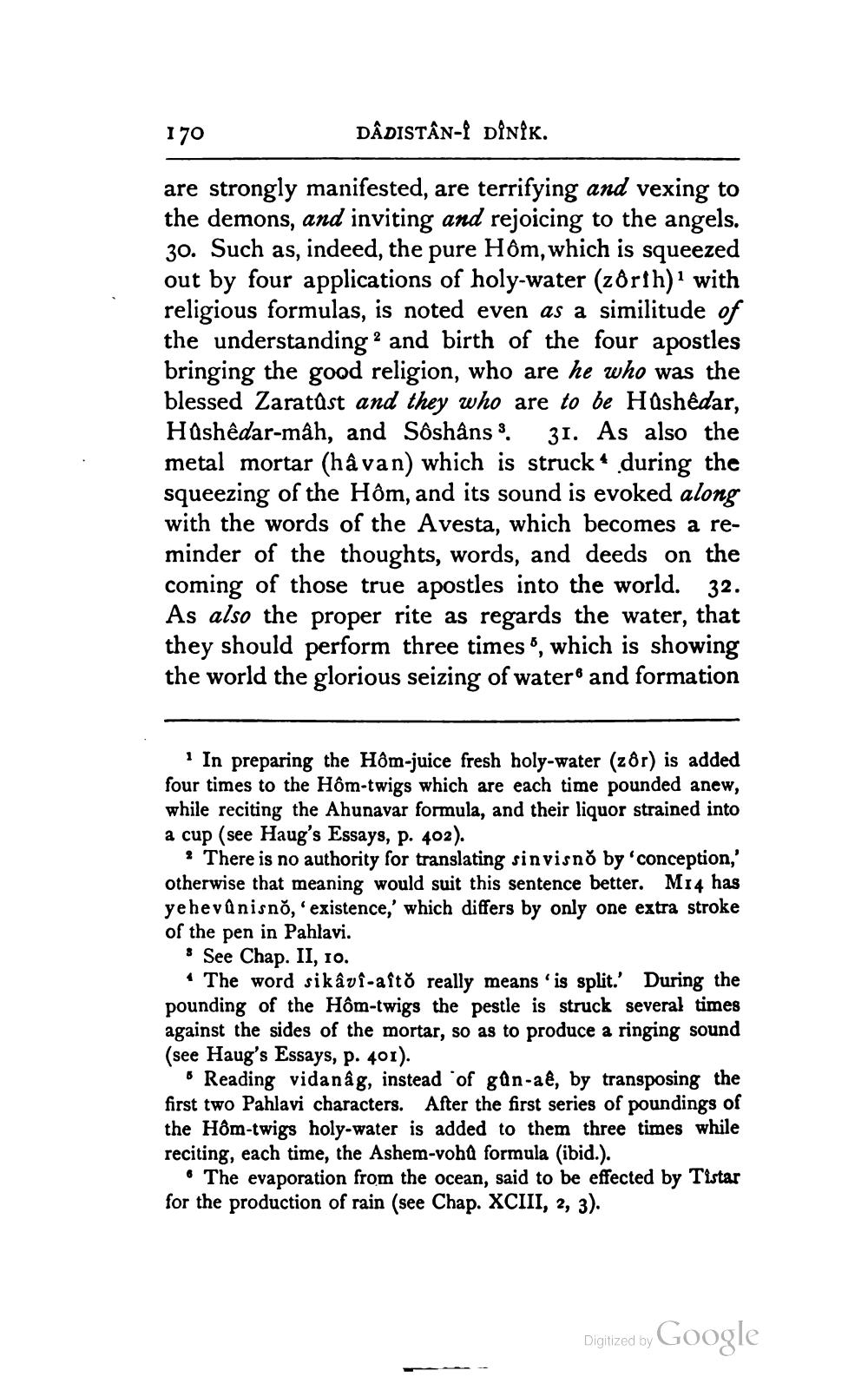________________
170
DÂDISTÂN-dinik.
are strongly manifested, are terrifying and vexing to the demons, and inviting and rejoicing to the angels. 30. Such as, indeed, the pure Hôm, which is squeezed out by four applications of holy-water (zôrih). with religious formulas, is noted even as a similitude of the understanding 2 and birth of the four apostles bringing the good religion, who are he who was the blessed Zaratust and they who are to be HQshedar, Hashedar-mâh, and Sôshåns S. 31. As also the metal mortar (ha van) which is struck during the squeezing of the Hôm, and its sound is evoked along with the words of the Avesta, which becomes a reminder of the thoughts, words, and deeds on the coming of those true apostles into the world. 32. As also the proper rite as regards the water, that they should perform three times, which is showing the world the glorious seizing of water and formation
* In preparing the Hôm-juice fresh holy-water (zôr) is added four times to the Hôm-twigs which are each time pounded anew, while reciting the Ahunavar formula, and their liquor strained into a cup (see Haug's Essays, p. 402).
? There is no authority for translating sinvisno by conception,' otherwise that meaning would suit this sentence better. M14 has yehev ûnisno, existence,' which differs by only one extra stroke of the pen in Pahlavi.
* See Chap. II, 10.
• The word sikâvi-a ito really means 'is split.' During the pounding of the Hôm-twigs the pestle is struck several times against the sides of the mortar, so as to produce a ringing sound (see Haug's Essays, p. 401).
Reading vida någ, instead of gûn-aê, by transposing the first two Pahlavi characters. After the first series of poundings of the Hôm-twigs holy-water is added to them three times while reciting, each time, the Ashem-voh formula (ibid.).
• The evaporation from the ocean, said to be effected by Tistar for the production of rain (see Chap. XCIII, 2, 3).
Digitized by Google




